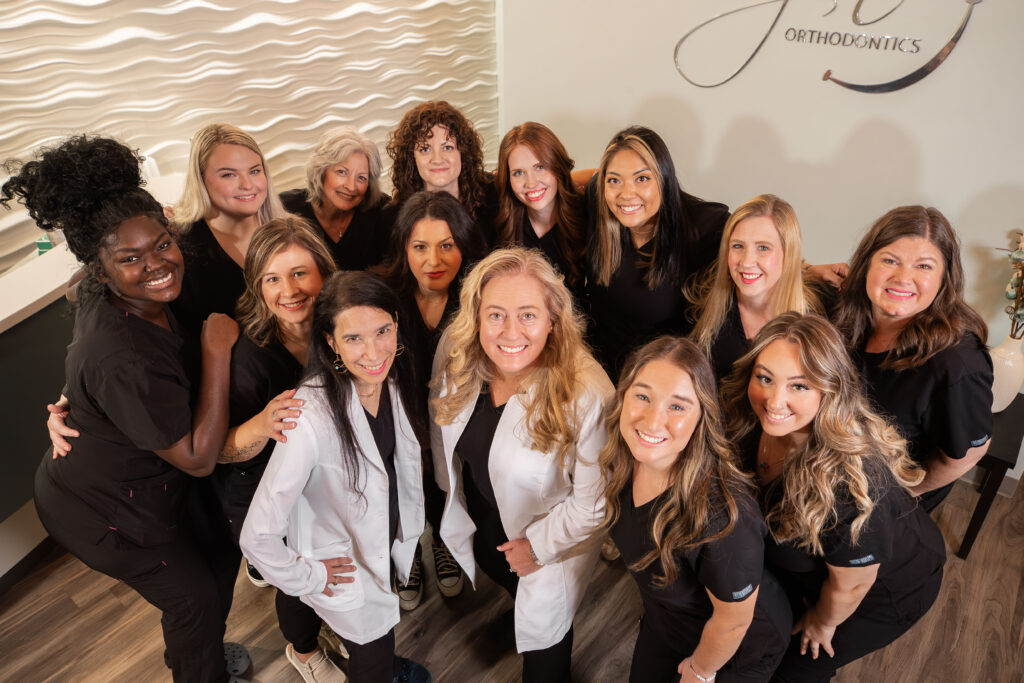Orthodontics has come a long, long way. Every office is a bit different, but at Morgan Orthodontics, we do our best to stay on track with modern practices! Today, we’ll cover new advancements in orthodontics, in our practice and far beyond!
What We Offer
Before hopping into the broader picture, we want to highlight a few key technologies Dr. Morgan and Dr. Coffelt utilize in our practice:
- LightForce Clear Braces: These are even more subtle than ceramic braces; they’re made of super small pieces and match teeth to be virtually invisible. We use digital scans for a precise fit customized to your teeth.
- Dental Monitoring: This technology allows you to track the movement of your teeth from home using your phone, which can help you keep track of progress remotely and avoid more in-person visits.
- Clear Aligners: We offer 3M Clarity clear aligners as a truly discreet means of treatment. These consist of 18-30 sets of aligners that slowly shift your teeth into place.
How Far We’ve Come
In order to really measure the progress of today’s innovations, let’s first observe some of the key benchmarks of modern orthodontics that didn’t always exist or exist at the level they do now:
- Technological Advancements: Digital imaging and 3D modeling are now standard, as well as computer-aided design, replacing many traditional X-ray machines and transforming our ability to professionally diagnose conditions and plan our treatments. We’ll cover more of these later.
- Braces and Aligners: These are still widely used today in their most traditional metal forms using brackets and wires. But clear aligners provide a considerably more discreet option for patients.
- Interdisciplinary Approach: Orthodontic treatment often involves collaboration with other specialists, like general dentists and oral surgeons, to ensure comprehensive care is available for patients with complex oral health needs. Digital communication has obviously made this collaboration a seamless process.
- Early Intervention: Orthodontic intervention in young kids has become more common, aiming to address issues before they grow severe and leading to a rise in preventive and interceptive treatment options.
- Patient-Centric Care: Today, we are highly focused on custom treatment plans, considering individual patient needs, preferences, and lifestyles, as opposed to a blanket approach to most or all patients.
- Accelerated Orthodontics: Techniques and devices that have greatly sped up the duration of treatment exist now.

New(ish) Technology
Let’s talk about some of the modern, alternative appliances and technologies that exist today:
- Lingual braces are applied to the back of teeth, making them hard to see. They have the same effectiveness as the alternative that is placed on the front of teeth.
- Smart braces are considered wearable technology. They are able to keep track of the progress of patient compliance and provide real-time feedback for doctors and wearers.
- Orthodontic robots are being explored to enhance the precision of certain procedures in order to execute improved results and reduce treatment times.
- Digital impressions have replaced traditional molds, which can be uncomfortable for many patients. This non-invasive method uses intraoral scanners to capture digital images of teeth and allow for impeccable treatment.
- 3D printing allows for enhanced customization and precision and can be used to create personalized aligners, braces, and other appliances.
The Cutting Edge
As of 2023, here are a number of areas where advancements are happening or theoretically could happen in the future:
- AI (Artificial Intelligence): AI is used in orthodontics to analyze patient data, predict treatment outcomes, and assist in treatment planning. These algorithms can allow for more personalized and efficient treatment.
- Augmented Reality (AR) for Treatment Visualization: AR technologies can be incorporated to provide patients with interactive and visual representations of their treatment progression; it enhances the patient’s ability to understand and engage with their doctors.
- Biocompatible Materials: New materials are being developed for orthodontic treatment in order to improve comfort and reduce treatment time.
- Precision Orthodontics: Advancements in precision medicines and genetics may contribute to more tailored orthodontic treatments based on an individual’s genetic profile, also helping with accurate treatments.
- Teledentistry: We already offer this, but it’s likely to continue to expand post-pandemic. This course of treatment can be an asset to students or adults with busy lifestyles.
For further information about orthodontic advancements, we recommend checking reputable orthodontic journals and industry conferences! We’ll also relay any new technology in our office through our website.

Best of the Best
The truth is, even with all of these advancements, they’re nothing without the people who make them work! A high standard of service is key to utilizing any orthodontic technology, and we have an abundance of that in our practice! We have two awesome offices where you can experience our excellence, in Leesburg (703-723-5900) and Winchester (540-667-5446).
